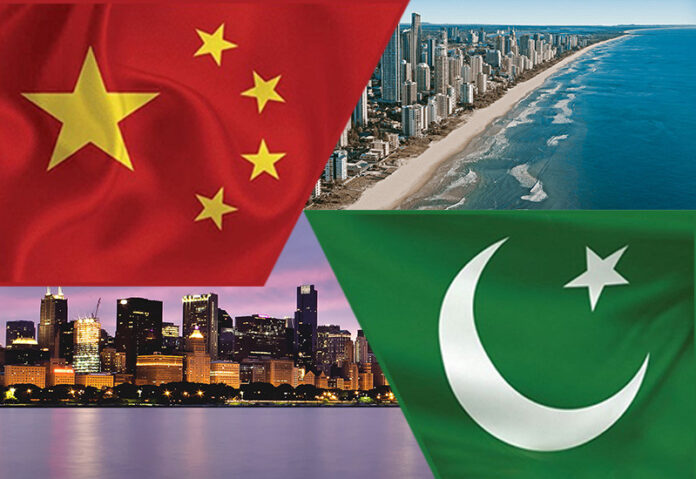Copyright thedailycpec

China Advances 15th Five-Year Plan for Modernisation From October 20th to 23rd, 2025, Beijing hosted the fourth plenary session of the 20th Central Committee of the Communist Party of China. The session’s primary outcome was the adoption of the Recommendations for the 15th Five-Year Plan for Economic and Social Development, which provides a strategic framework for China from 2026 to 2030. This plan builds on the achievements of the 14th Five-Year Plan and is a key step toward achieving socialist modernisation by 2035. During the 14th Five-Year Plan period (2021–2025), China’s total economic output consecutively surpassed RMB 110 trillion, RMB 120 trillion, and RMB 130 trillion. Its per capita GDP exceeded US$13,000 for two consecutive years, and the country contributed about 30 per cent annually to global economic growth. In the first three quarters of 2025, China’s GDP surpassed RMB 100 trillion, with projections for the year reaching RMB 140 trillion. These accomplishments lay a solid foundation for the 15th Five-Year Plan, which aims to reinforce China’s development and advance modernisation on all fronts. Xi Jinping’s Leadership and Guidance General Secretary Xi Jinping played a pivotal role in drafting the Recommendations for the Fourth Plenary Session, ensuring that Xi Jinping Thought on Socialism with Chinese Characteristics for a New Era forms the core guiding principle. The session emphasised the continued study and implementation of Xi Jinping’s important speech and the strategic vision of the plenary session. These efforts guide China’s approach to deepening modernisation, fostering development, and strengthening exchanges with key partners, especially Pakistan. Strengthening Governance Cooperation with Pakistan China and Pakistan, both developing countries, share the challenge of promoting economic growth and improving the welfare of their people. The two nations can benefit from exchanging governance experience, particularly in the formulation and execution of long-term development plans. China’s experience with Five-Year Plans has provided scientific decision-making tools and political advantages that can be shared with Pakistan to strengthen its development initiatives. The Recommendations highlight the need to prioritise economic development, focus on high-quality growth, drive reform and innovation, and ensure people-centred policies. These principles will guide China through strategic opportunities and challenges in the international landscape. The session emphasised pursuing balanced growth, fostering common prosperity, and enhancing both development and security to strengthen China’s comprehensive national power and global standing. Collaboration in Agriculture and Rural Development Both countries prioritise agricultural modernisation and rural development. China’s 14th Five-Year Plan achieved historic success in poverty alleviation, lifting 98.99 million rural residents out of poverty and eradicating absolute poverty. The Recommendations underscore the need to consolidate these achievements while addressing remaining rural development challenges. Integrated urban-rural development, poverty prevention, targeted assistance, and social support mechanisms are core components of China’s rural strategy. Recognising Pakistan’s focus on agriculture and poverty reduction, China has offered to share expertise in targeted poverty alleviation. Initiatives include expanding contract farming, supporting exports of high-quality Pakistani agricultural products, and launching programs such as the “Sweet Initiative” in major date palm regions to provide machinery, training, and direct benefits to local farmers. Additionally, the project “Strengthening Maternal and Neonatal Health in 100 Health Facilities across Balochistan” aims to distribute over 80,000 medical devices, benefiting more than six million people. High-Level Practical Cooperation and Industrial Growth The 15th Five-Year Plan emphasises high-quality and accelerated development across industries, including manufacturing, aerospace, new energy, and biotechnology. The Recommendations highlight the strategic importance of the real economy as the foundation of China’s growth. During the 14th Five-Year Plan period, China’s manufacturing sector grew from RMB 26.6 trillion to 33.6 trillion, contributing over 30 per cent of global manufacturing growth. Milestones included the launch of China’s first domestically-built aircraft carrier with electromagnetic catapult, the first large cruise ship, the completion of the Tiangong space station, and the commercial operation of domestically-developed passenger aircraft. For Pakistan, industrial and IT sector growth aligns with China’s strategic priorities. The two countries recently signed the Action Plan for 2025–2029 to strengthen the China-Pakistan Community with a Shared Future. The plan includes 63 measures in seven areas, such as upgrading the China-Pakistan Economic Corridor, industrial cooperation, agricultural collaboration, and technology partnerships in IT, AI, and big data. Notable projects demonstrate tangible outcomes of this cooperation. The Haier-Ruba Special Economic Zone produced US$400 million in output, paid US$120 million in taxes, and created 6,000 jobs. A new industrial park is expected to produce ten million home appliances annually and create over 10,000 jobs. The Challenge Group’s textile industrial park will generate US$400 million in annual exports and employ 20,000 workers. The Balakot Hydropower Project, recently achieving river closure, is projected to provide green electricity to 1.8 million people annually and has already created over 2,000 jobs. Promoting Trade, Openness, and Economic Globalisation China remains committed to high-standard opening up, multilateral trade, and economic globalisation. Amid rising unilateralism and protectionism globally, China continues to pursue mutually beneficial trade strategies. During the 14th Five-Year Plan, China maintained its position as the world’s largest trader in goods, exceeding US$6 trillion in trade volume, and became the world’s second-largest services trader, surpassing US$1 trillion. China also granted zero tariffs on all lines to least-developed countries with diplomatic ties, promoted foreign investment, and established over 240,000 foreign-invested enterprises. China-Pakistan trade has grown steadily, with Pakistan’s exports of marine products, rice, and sesame to China increasing by 23 per cent, 63 per cent, and 87 per cent, respectively, in the first three quarters of 2025. Upgrading the China-Pakistan Free Trade Agreement will allow more Pakistani sectors to benefit from China’s vast market. Both countries continue to uphold multilateralism, strengthen supply chain stability, and promote inclusive global economic growth. A Shared Vision for the Future The 75th anniversary of China-Pakistan diplomatic relations in 2026 provides a milestone to deepen all-weather strategic cooperation. The two countries aim to enhance political trust, practical collaboration, security coordination, and international partnership. By implementing agreed initiatives and pursuing joint development, China and Pakistan aim to set an example for regional cooperation and contribute to a shared global future. Under the leadership of the CPC, China’s path to modernisation continues steadily, offering extensive opportunities for collaboration with Pakistan and demonstrating the potential of long-term strategic partnerships in Asia.



